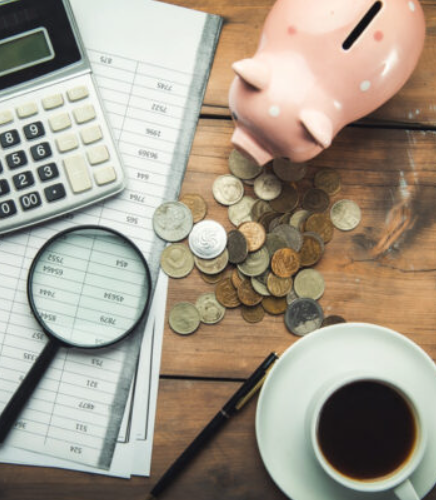Pension income is typically taxed as regular income in the UK, but there are strategies you can use to minimize or even avoid paying tax on your pension savings. Whether you’re withdrawing pension funds gradually or taking a lump sum, understanding the tax rules can help you make the most of your retirement income. This blog outlines practical ways to reduce your pension tax liability.
How Much Tax Do You Pay on Your Pension?
Pension income is treated as part of your overall taxable income. For the 2024/25 tax year, the personal income tax allowance is £12,570, which means you don’t pay tax on pension income if it stays within this threshold. However, if your combined income from pension withdrawals and other sources exceeds this amount, you’ll be taxed according to the standard UK income tax rates:
- 0% on income up to £12,570
- 20% on income between £12,571 and £50,270
- 40% on income between £50,271 and £125,140
- 45% on income over £125,140
It’s important to note that Scotland has a different tax system, so make sure to use the appropriate calculator for your region.
How to Avoid Paying Tax on Your Pension
There are several strategies that can help you reduce or avoid tax on your pension income. While these methods can be effective, consulting with a tax advisor is always recommended to ensure you’re in compliance with tax laws and making the most of your allowances.
Maximize Your Annual Personal Allowance
To keep your pension income tax-free, aim to withdraw only up to the personal tax allowance of £12,570. If your total income, including other sources like investments or salary, doesn’t exceed this threshold, you won’t be taxed. Married couples or civil partners can further reduce their tax burden by utilizing the Marriage Allowance. One partner can transfer £1,260 of their personal allowance to the other, reducing the higher earner’s tax bill by up to £252 annually.
Avoid Withdrawing All at Once or Too Early
While you can access your pension savings before retirement, withdrawing funds prematurely or in large amounts may trigger higher taxes. If you start withdrawing before the age of 55, you’ll activate the Money Purchase Annual Allowance (MPAA), which lowers your tax-free allowance and pension contribution limit. To avoid higher taxes, it’s advisable to avoid withdrawing large sums or withdrawing all at once, as this could push your income into higher tax brackets.
Take the Tax-Free Lump Sum
Pension holders aged 55 or older can typically withdraw up to 25% of their pension pot tax-free. This is known as the tax-free lump sum. For example, if you have a pension pot of £100,000, you can withdraw £25,000 without incurring tax. This amount is your lifetime allowance, and if you don’t use it all in a given year, you can carry it over to future years. However, the tax-free lump sum amount can only be used once, so plan your withdrawals carefully.
Use the Pension Drawdown Scheme
Instead of taking an annuity, many retirees opt for the pension drawdown scheme. This allows you to access your pension funds as needed, while keeping the remaining balance invested. The pension drawdown scheme offers more flexibility than annuities, allowing you to adjust your withdrawals to stay within the £12,570 tax-free threshold each year. The amount you withdraw from the drawdown will be subject to income tax, but you have control over how much you take, which can help you avoid higher tax bands.
Withdraw Only What You Need
It’s tempting to take out large sums from your pension, but withdrawing only what you need each year can reduce your tax liability. By keeping the rest of your pension invested, you can potentially grow your savings, while minimizing the amount subject to tax. Additionally, there’s no obligation to withdraw your pension funds when you retire, and putting money into savings accounts or ISAs may not be the most efficient option, especially with inflation eroding the value of cash savings.
Take a Small Pot Lump Sum
If you have pension pots worth less than £10,000, you can take the entire amount as a lump sum. For uncrystallised pots, 25% of the lump sum is tax-free. Taking up to three small pots from personal or workplace pensions won’t trigger the MPAA, allowing you to keep your pension contributions intact.
Use ISA Savings for Initial Retirement Expenses
Individual Savings Accounts (ISAs) are a great way to supplement your retirement income. Withdrawals from ISAs are tax-free, making them ideal for covering living costs during your transition to full retirement. While ISAs provide flexibility, it’s essential to consider withdrawal penalties for certain ISA types, like fixed-term ISAs. Lifetime ISAs allow penalty-free withdrawals after age 60 but impose a 25% penalty if accessed earlier.
Delay Accessing Pension Funds
One strategy to reduce taxes is to delay accessing your pension until you have used up other savings, such as your ISA and tax-free pension contributions. By postponing pension withdrawals, you allow your pension to grow and avoid higher tax brackets, especially if you expect a reduction in your income later in life. This approach helps maximize your pension pot and potentially minimizes tax obligations.
Passing Pension Pot to Beneficiaries
Unlike ISAs, pension savings are generally not included in the estate for inheritance tax purposes. If you pass away before age 75, any unused pension funds can be passed on to your beneficiaries tax-free. This can be a significant advantage for ensuring your loved ones inherit your pension without paying tax on it.
Conclusion
Avoiding or minimizing taxes on your pension income is possible with careful planning and the right strategy. By staying within your personal allowance, utilizing tax-free lump sums, and choosing flexible options like the pension drawdown scheme, you can maximize your retirement income while minimizing your tax liability. Always consult with a tax professional to ensure you’re making the best decisions for your unique financial situation.



